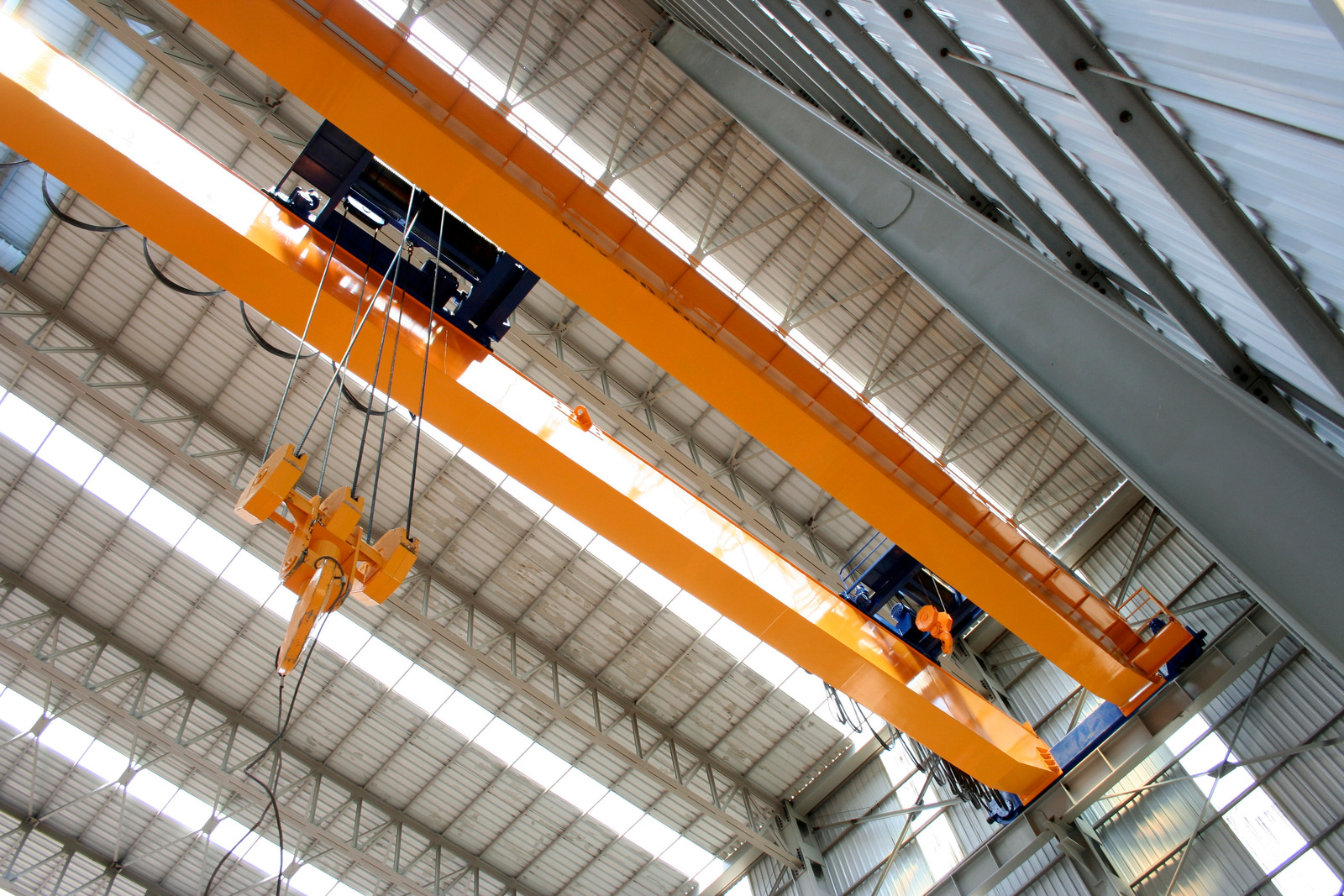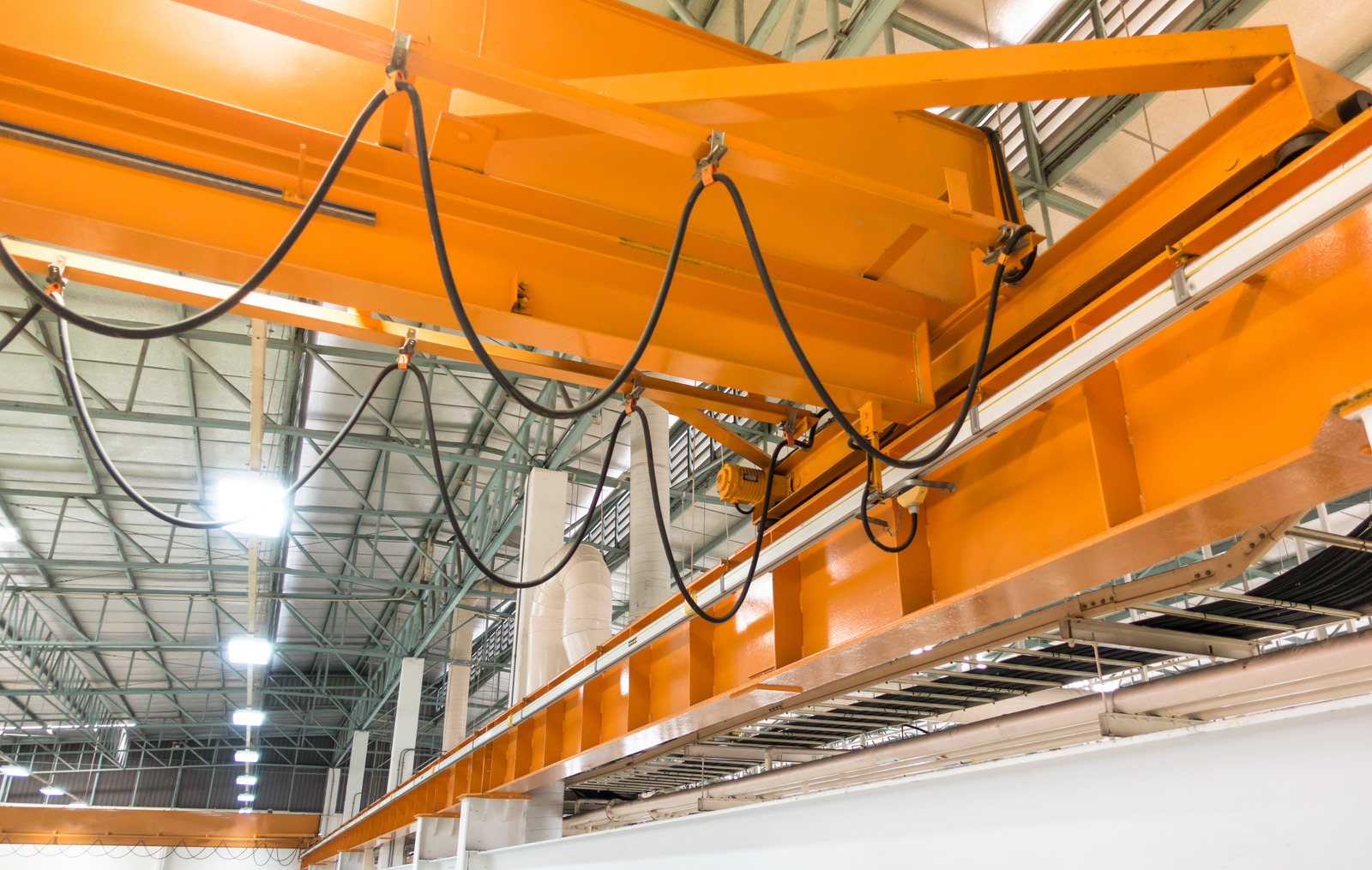Hoists, winches, and windlasses for general purposes
- Training tailored to client's needs
- Training at the client's location
- Open training at our location - if you have few employees, join us!
Hoists, winches, and windlasses for general purposes

Overhead cranes, hoists, and winches of general and special purpose are devices used for close-range transportation, which are employed for the movement of people as well as cargo both outdoors and inside buildings. Operators or maintainers of these devices are individuals who possess the proper certification required for their profession, issued by UDT (Office of Technical Inspection). The courses organized by us are designed to prepare participants in terms of knowledge and practical skills to obtain the necessary UDT qualifications.
What are overhead cranes, hoists, and winches?
An overhead crane is a lifting device designed for transporting loads horizontally and vertically, operating with intermittent motion. This device consists of a supporting structure, which typically moves on tracks, and a winch or hoist, which moves along its surface.
A hoist is a lifting device designed for raising loads in vertical motion. However, for a hoist to properly transport cargo, it is essential to attach a chain or cable with a gripping element, usually a hook. This device is designed to move on a stationary runway track, stabilizing the machine during operation. The housing of the hoist's lifting mechanism serves as its supporting structure. A winch is a hoisting device, colloquially known as an "electric winch," designed for lifting loads in vertical motion. To properly transport cargo, a winch also requires the attachment of a chain or cable with a gripping element, usually a hook. This device is designed to move on a stationary runway track, stabilizing the machine during operation. The assembly of winch mechanisms, unlike hoists, is mounted on a separate supporting structure established by a frame (fixed, movable, or traversing).
Specifics of overhead cranes, hoists, and winches
The fundamental feature of overhead cranes, hoists, and winches of general purpose is that they are typically controlled from the working level (applies to hook cranes), while devices of special purpose are operated from a cabin. Examples of overhead cranes of special purpose include:
- Gantry cranes;
- Column cranes;
- Foundry cranes;
- Grab cranes;
- Tongs cranes;
- Strip cranes;
- Charge cranes;
- Heat treatment cranes;
- Bell cranes;
- Gripping cranes;
- Grabbing cranes;
- Traversing cranes.
Most devices among overhead cranes, hoists, and winches are subject to technical inspection. However, it is worth noting that for close-range transportation machines mentioned above, with a lifting capacity of up to 250 kg (excluding equipment used for transporting people), a simplified form of inspection has been established. Such inspection does not require periodic technical examinations of the device, nor does it require reporting it to UDT (Office of Technical Inspection) or qualification for operational purposes. During this type of inspection, proper equipment maintenance must still be ensured by an individual with the appropriate qualifications. The simplified inspection also applies to:
- Stationary cranes, hoists, and winches with a single-phase electric drive and a maximum lifting capacity of up to 1000 kg;
- Hoists and winches of general purpose with manual drive of all mechanisms and a maximum lifting capacity of up to 2000 kg.
Training Objectives
Our organized course aims to provide participants with both theoretical and practical knowledge, preparing them for the state qualification exam required for operating or maintaining overhead cranes, hoists, and winches of general and special purpose by the relevant technical inspection authority.
Classification of Overhead Cranes Based on Their Purpose
The basic qualifications issued by the Office of Technical Inspection apply to overhead cranes, hoists, and winches, which can be divided into two categories based on the purpose of these machines. We distinguish between:
- Overhead cranes, hoists, and winches of general purpose – these qualifications apply to the operation and maintenance of general-purpose hook cranes controlled wirelessly from the working level.
- Overhead cranes, hoists, and winches of general and special purpose – this is the highest category of qualifications, expanding the user's qualifications to cranes controlled from a cabin.
Prerequisites for Candidates
Candidates for our training sessions must be adults, have at least a basic education, and possess a certificate of good health, confirmed by a relevant medical certificate with no contraindications for working as an operator or maintainer of overhead cranes, hoists, and winches.
Training Topics
The scope of the training primarily includes:
- Knowledge of legal regulations related to technical inspection;
- General information about the operation and diagnostics of close-range transportation devices;
- Knowledge of the types, construction, and equipment of overhead cranes, hoists, and winches;
- Principles of safety and occupational hygiene when operating and maintaining overhead cranes, hoists, and winches;
- Duties of the operator and maintainer of TB equipment before, during, and after work;
- Practical skills in correctly selecting slings and determining their technical condition;
- Techniques for estimating the load weight and its center of gravity;
- Understanding the correct operation of safety devices;
- Familiarity with equipment operating instructions;
- Procedures to follow in the event of a dangerous equipment failure or a workplace accident involving overhead cranes, hoists, or winches.
Training Information
 The training for overhead cranes, hoists, and winches of general and special purpose enables course participants to acquire comprehensive knowledge in both theoretical and practical aspects. This will allow participants to easily pass the state exam, which results in obtaining UDT qualifications. The areas of knowledge that our instructors will help participants become familiar with include the operation and maintenance of equipment, which are the focus of our courses. In addition, participants will learn about TB equipment operation and safety techniques. The UDT qualifications obtained are valid for a period of 5 to 10 years.
The training for overhead cranes, hoists, and winches of general and special purpose enables course participants to acquire comprehensive knowledge in both theoretical and practical aspects. This will allow participants to easily pass the state exam, which results in obtaining UDT qualifications. The areas of knowledge that our instructors will help participants become familiar with include the operation and maintenance of equipment, which are the focus of our courses. In addition, participants will learn about TB equipment operation and safety techniques. The UDT qualifications obtained are valid for a period of 5 to 10 years.
UDT Knowledge and Skills Assessment
Qualifications for operating overhead cranes, hoists, and winches are essential for working as an operator or maintainer of these machines. After completing our training at our facility and passing the state qualification exam conducted by the qualification committee, participants receive a certificate and acquire the necessary UDT qualifications, which are valid for a period dependent on the type of equipment. The knowledge assessments that participants will undergo include:
- Internal exam at the training center;
- External exam before a committee appointed by the Office of Technical Inspection.
Issued Documents
- Certificate of course completion issued based on the Regulation of the Minister of National Education.
- Qualification certificate issued by the Office of Technical Inspection for operating or maintaining the specific machine for which the participant passed the qualification.
Validity of Qualification Certificates: Qualification certificates are valid for a period of 5 to 10 years, depending on the type of equipment (general or special). After our course, you can obtain qualifications for the following periods:
- 10 years - hoists and winches of general purpose;
- 5 years - hoists and winches of general and special purpose;
- 10 years - overhead cranes, hoists, and winches of general purpose;
- 5 years - overhead cranes, hoists, and winches of general and special purpose.
What We Offer
- Modern machinery and a wide range of spare parts;
- Comprehensive online materials in the form of e-learning;
- A database of sample exam questions with answers;
- Preparation for the exam by an experienced training staff.
Our training allows you to obtain qualifications for:
| Overhead cranes, hoists, and winches of general purpose | Overhead cranes, hoists, and winches of special purpose |
| Including cranes: | Including cranes: |
How much does the course cost? Our wide range of training sessions conducted by specialists and professional equipment contributes to the popularity of our courses. The cost of the course for overhead cranes, hoists, and winches depends on the selected training format:
- Group or individual;
- Internal or external.
We cordially invite you to contact us!
